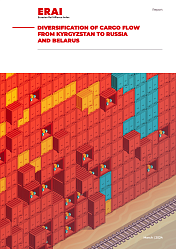According to the latest European Road Freight Rate benchmark update from Transport Intelligence (Ti) and digital freight platform Upply — which have been joined by for the first time by the international road transport union IRU in promoting the information — the third-quarter (Q3) 2021 European Road Freight Rate benchmark index stood at 107.6, which is 3 percentage points higher than in Q3 2020 and indicates the 5th consecutive quarter of European road freight rate increases.
And the report’s authors said freight rates «are expected to rise further in Q4 2021 as demand increases and capacity remains tight».
As well as the fifth consecutive quarter in which the European Benchmark has risen, the report highlighted that the upwards rate development seen in Q3 2021 «also marks a 4% rise in benchmark rates when compared with Q2 2020 when the worst of disruption from the Covid-19 pandemic was felt».

As retail and manufacturing sectors across Europe have seen demand rise steeply up to the end of Q3 2021, capacity shortages have increasingly become a feature of Europe’s road freight market — «especially in the UK where a shortage of qualified HGV drivers has led to empty supermarket shelves and severe congestions at the port of Felixstowe, amongst other challenges».
But the report highlighted that «driver shortages are not limited to the UK, of course. According to IRU driver shortage survey results, in Spain, truck driver shortages could reach 10.2% in 2021, up from 7% in 2020. The current shortage is estimated to be between 40,000-50,000 drivers in France and rises to 65,000 in Germany.»
Fuel cost inflation
In addition, Europe has seen widespread cost inflation up to the end of Q3 2021, the report highlighted, including in fuel costs. According to data from Ti and the IRU, diesel prices in Germany are 38.5% higher than Q3 2020, while the UK (+26.6%), Spain (+25.2%), France (+23.5%) and Italy (+20.6%) also saw markedly higher prices.
For the first time, Ti, Upply and IRU’s European Road Freight Rate Benchmark report, covering a range of major European countries including France, Germany, Italy, Poland and the UK, also includes data on domestic prices, and Q3’s edition features data on the French market. The new data in the Upply Freight Index for France shows that domestic French freight rates are up by 3.5% year-on-year in Q3 2021, driven by the national economy’s strong recovery from Covid-19 across retail and manufacturing.
French rates «are also being driven up by supply side challenges similar to those seen across much of Europe, including driver shortages. Rising costs, especially fuel costs, are also a significant factor,» the report highlighted.
Rates declined on UK-inbound lanes
The latest benchmark report also tracked prices for cross-channel freight on the London to Lille lane, to map the impact of factors including Brexit, driver shortages, global supply chain bottlenecks and the reopening of economies on both sides of the channel. The data shows that rates have steadily declined on UK-inbound lanes.
In Q3 2021, rates from Lille to London declined 6.3% when compared to the same three months in 2020, caused largely by lower volumes crossing the channel. Meanwhile rates from London to Lille are 9.6% higher in Q3 2021 year-on-year.
However, the data reveals the majority of this rise occurred during the months immediately after Brexit and has since persisted, the report indicated.
Sustained rate inflation
Nick Bailey, head of research at Ti, commented: «In Q3 2021, we started to see cracks appear in supply chains across Europe as a mix of supply- and demand-side challenges impacted the movement of goods in the region. The challenges have been more pronounced in certain locations, and certainly in the UK, but the effects are creating upwards pressure on rates.
«Heading into peak season and with the addition of rising costs, particularly higher diesel prices, all the ingredients for a period of sustained rate inflation are in place.»
Vincent Erard, IRU’s director of corporate services, said: «We’re delighted to join with our partners Ti and Upply on making these important European road freight pricing trends more accessible. IRU works across supply chains on issues that cause, or are impacted by, freight rates — including fuel prices, decarbonisation, technology, digitalisation, driver shortage and trade policy. Putting pricing trends into the context of these wider industry issues gives logistics businesses a unique perspective on the past and the future.»



